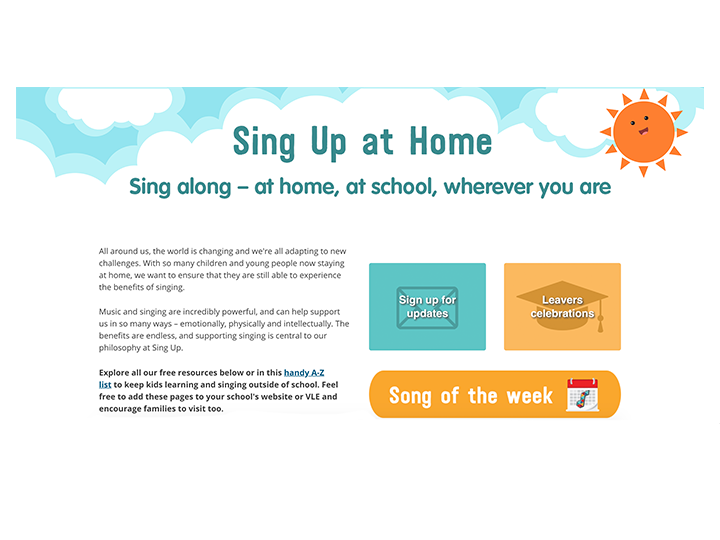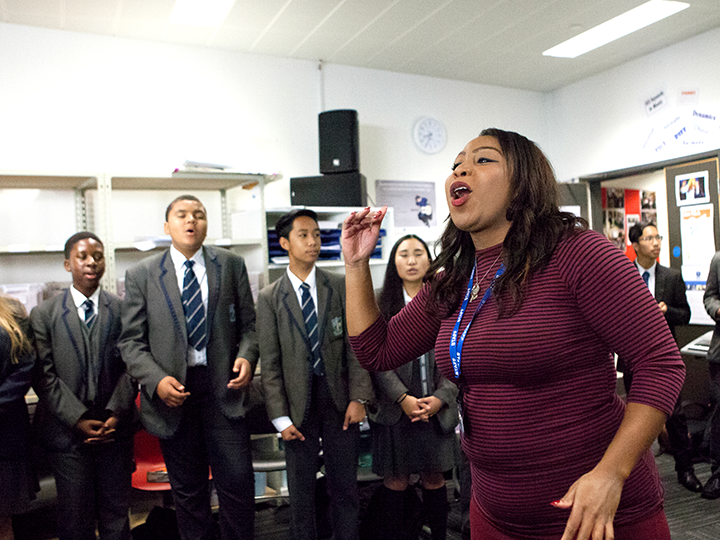
Having conducted thousands of concerts between them, with choirs of all ages and abilities, National Youth Choirs of Great Britain conductors Ben Parry, Greg Beardsell, Esther Jones and Dominic Ellis-Peckham know that no two choirs are the same and every rehearsal is different. But follow their advice below and you’ll get great results
Be prepared
Whether you’re dealing with a single line melody for younger children or a complex score in multiple parts for more advanced singers, it is vital that you know the music well enough to be able to give strong leadership.
- If you have a good inner ear, listen to the whole score in your head. Alternatively, play it through on a keyboard or listen to a recording.
- Have a clear idea of what tempo you want to start the piece at, and practise conducting that opening. The same goes for transitions– changes of tempo and/or time signature.You may find it helpful to practise in front of a mirror.
- As you go through the score, look at the details, noting its time signature, key, tempo markings, dynamics and other expression markings.
- You need to know the vocal lines sufficiently well to be able to demonstrate them to your singers, and to identify and correct any mistakes (it is always preferable to demonstrate vocally if you can do so confidently). Make a note of anything that strikes you as particularly difficult, and plan how to tackle it in rehearsal.
Get set before go
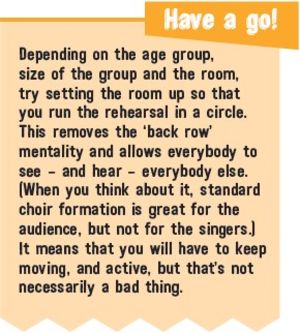
You’re conscious of time, and your instinct is to get everyone seated and singing as soon as possible. But room set up and singer warm-ups mean more than you think.
- Look at the room, identify distractions and things that might affect learning and remembering.
- Your singers need light and air. Make sure that the space is as well lit and as well ventilated as you can make it.
- A warm-up exercise is often the best possible way of bringing the group together and building the team right at the start, rather than jumping into a difficult section of music, or a section where not everyone sings. Think of a warm-up as your first collective achievement.
Make a team
Contrary to popular belief, a choir is not a group of people who sing at the same time: it’s a group of people who sing together. Great performances come from a great team, and shared ownership and responsibility.
Teacher Q: How do you get people to turn up on time?
Give responsibilities out to the group. Depending on your age group, it may be chair team for getting the chairs neat, a tidy team, a music collector, section leaders.
Teacher Q: Do you have any quick engagement or focus activities?
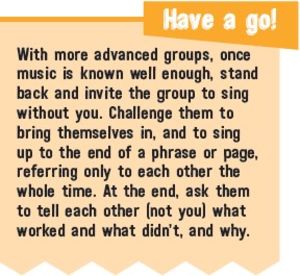
Establish ‘focus points’ at the start of the rehearsal. Tell the group to look down at the floor and say: ‘This is focus point 1’. Then at the ceiling – ‘focus 2’ – and then finally to look directly at you: ‘focus 3’. If during the rehearsal you sense that the group or parts of the group are drifting or losing focus, call out the focus points. This allows you to engage focus positively. Don’t complain: ‘Oh, I wish you would all focus.’
Have a spare chair and give it a different status at each rehearsal. It might be the ‘focus ’or ‘good expression’ chair. Reward good work by promoting individual singers to the chair through the rehearsal and encourage teamwork by inviting older singers to identify who should take the chair.
Shake it up
There’s nothing more boring than a rehearsal which is obviously a ‘production line’, moving through from page one to the end, fixing bar by bar and singing everything repeatedly in exactly the same way. Your singers won’t enjoy it, and you probably won’t either. So, shake things up.
- Don’t always start at the beginning – it’s a sure-fire way to make sure you under rehearse the end. And once you’ve started, collect three errors before stopping. If the group knows that you’re going to stop the whole rehearsal the moment you hear something you don’t like, then no one can enjoy the flow of the music.
- Try adding actions. If the group’s getting a rhythm wrong, add an action to the right rhythm as you teach it so the positive habit becomes reinforced physically as well as vocally. Or add physical actions to words to help memorisation (create a narrative to the actions to really help). Or you could try reinforcing dynamics with a game of standing on tip-toes for loud, normal stance for medium, and crouch for soft. (Don’t do this one too often, you don’t want your singers confusing this with technique.)
- Get your singers to sing a melody entirely staccato – just the ‘front’ of each note – to really focus on the tonal centre of each note and accuracy of intervals. Or try note on/note off, leaving out alternate notes
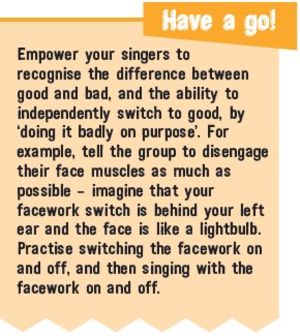
Take a moment
Focus is important, and so are good results. But don’t underestimate the benefits of taking your time.
- Before your rehearsal even starts, take a moment to think about the rehearsal from your singers’ point of view. What are expecting from you and what are they hoping to get out of the rehearsal? How can you acknowledge that and make it happen for them?
- There are some rehearsals where you’ll naturally be working against the group dynamic – it’s early in the morning, it’s after games or before a school trip. Even if your rehearsal time is limited, don’t be afraid to start with a warm-up and reclaim the focus.
- Take some time to contextualise what you’re singing and to discuss it. It doesn’t need to be a history lesson, but there is always a story behind a piece of music and sometimes you spend so much time rehearsing that it gets forgotten. Dare to go more in-depth and beneath the surface.
- Don’t be afraid to run something again for your benefit, if you feel that you need to hear something better – maybe it’s a tuning issue, or someone coming in early, or singing the wrong word.
Mind your language
A conductor’s first job is to listen, and your gestures and facial expressions will always say so much more than spoken instructions. When you do speak, avoid lists, and remember that the most important thing you can do is to reinforce what has been working well.
Teacher Q: How do you stop them from talking?
Make sure you always highlight the good examples to change the bad. Don’t tell off the group for bad posture – identify and compliment the singer who’s sitting well. Everyone wants to be complimented – they’ll follow suit.
- When you stop the rehearsal to make observations, try to give ‘three stars and a wish’: first give three stars for things that went well (which means that you’ll need to have been listening well to identify them) and then move on to identify something that you want to improve.
- 'But out!’ Eradicate the word ‘but’ from your rehearsal language. ‘I liked Verse 1 because [this] was good and [that] was good. Verse 2 can be improved if we do more of [this].’
- Involve the choir in the rehearsal process and generate an atmosphere of shared responsibility and solution. Ask sections of the choir who aren’t rehearsing what they think (make sure they’re positive) and what they can hear.
Rehearsal mantras
Ben Parry: Remember the three ‘L’s: look, listen and learn
Esther Jones: Allow your singers to take risks, and support them to grow in confidence
Dominic Ellis-Peckham: You are the mirror of what you want to achieve
Greg Beardsell: Don’t listen for what you think you’ll hear – listen to what you’re hearing

